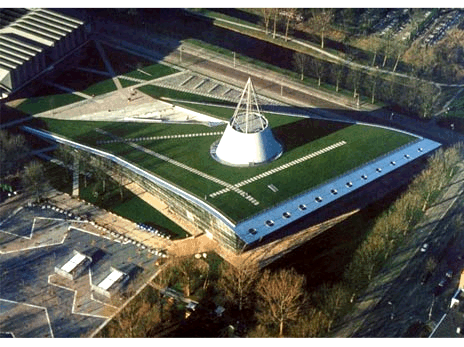

The library as a place would no longer be a critical component of an academic institution. Many asserted that the virtual library would replace the physical library. Once students had the option of using their computers anywhere on campus-in their residence halls, at the local cyber café, or under a shady tree in the quad-why would they need to go to the library? Those charged with guiding the future of a college or university demanded that this question be answered before they committed any additional funding to perpetuate the “library”-a facility that many decision makers often considered little more than a warehouse for an outmoded medium for communication or scholarship. With the emergence and integration of information technology, many predicted that the library would become obsolete. Reinventing the Library-Technology as Catalyst Significantly, the library must serve as the principal building on campus where one can truly experience and benefit from the centrality of an institution’s intellectual community. As an extension of the classroom, library space needs to embody new pedagogies, including collaborative and interactive learning modalities. To meet today’s academic needs as well as those in the future, the library must reflect the values, mission, and goals of the institution of which it is a part, while also accommodating myriad new information and learning technologies and the ways we access and use them. Given this longstanding practice, it is no surprise that the traditional library we inherit today is not the library of the future. Prime space was routinely reserved for processing materials. Planning and design of these facilities were primarily devoted to the preservation and security of materials and to the efficiency of the library collection services. Libraries were revered but, with the exception of providing expanding collections, were comparatively static buildings. Despite their handsome exteriors, the interior spaces were often dim and confining, the buildings were difficult to navigate, and specialized services and collections were inaccessible to all but the serious scholar. To enter and use them was considered a privilege.

As a “temple of scholarship,” the library as place assumed an almost sanctified role, reflected both in its architecture and in its siting.Īs developed for more than 200 years, academic libraries in the United States and abroad have generally been designed first and foremost as places to collect, access, and preserve print collections. Richly embellished with stained glass windows, paneled with ornately carved oak, and appointed with marble statuary commemorating Greek and Roman philosophers, these libraries exuded an almost palpable sense of spiritual and intellectual contemplation. Unlike the medieval cloistered buildings that were frequented only by monks, libraries at such venerable institutions as Cambridge University and Trinity College at the University of Dublin were both centers of learning and important gathering places for scholars throughout the Western world.

These early academic libraries were very different from those of the monastic tradition from which they emerged. Preeminently sited and often heroic in scale and character, the library has served as a visual anchor for the surrounding buildings on campus. Since the rise of universities across Europe during the Age of Enlightenment, the academic library has always held a central position as the heart of an institution-both symbolically and in terms of its physical placement.


 0 kommentar(er)
0 kommentar(er)
